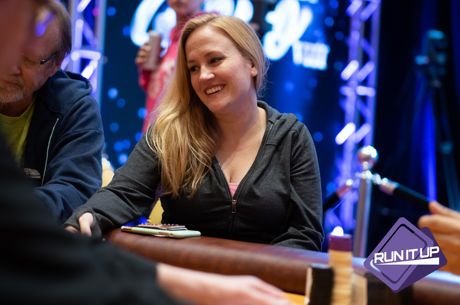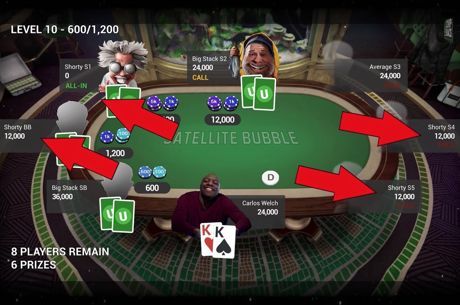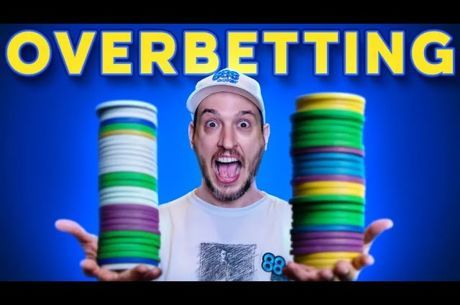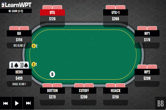Hand Review: Turning Top Pair Into a Bluff
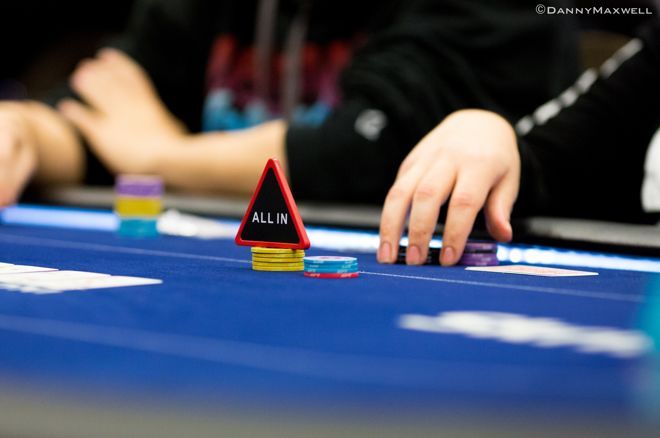
Covering live poker tournaments for a living affords me the opportunity to see countless thousands of hands played out, many of which offer interesting and potentially valuable insights into how players — both amateurs and professionals — play the game. In this ongoing series, I'll highlight hands I've seen at the tournaments I've covered and see if we can glean anything useful from them.
The Scene
While I have enjoyed waxing poetic about short deck hold'em for a few months, it's time to get back to my forte — no-limit hold'em. This hand comes from my recent series playing World Series of Poker Circuit Potawatomi in Milwaukee, specifically the $400 Six-Max.
The opponent on my left appeared to be a less experienced player. I believe he mentioned that he had won a satellite into the tournament. We were both doing well in the early going, and he just barely covered my stack of around 33,000 with blinds and antes at 300/600/75.
The Action
It folded to me on the button, where I opened A♠6♦ to 1,300. The small blind called and the big blind made it three of us to the Ax8♠3♠ flop.
Both blinds checked and I bet 1,300. The small blind check-raised to 4,000, folding out the big blind. I peeled, and the 7♠ came on the turn. The small blind bet 4,000 and I called once again. On the river, it was a 2♣. The small blind bet 4,200 and I shoved all in for about 20,000 more.
He tanked a couple of minutes into the break and then folded 8x7x face up.
Concept and Analysis
This hand was one where I had an initial plan and made an adjustment on the river, opting to go from attempting to show my hand down to turning top pair into a bluff. It's definitely not a line that I'll take very often at all, but it seemed appropriate in this instance.
To start off, I make a standard button open and get action from two players, then flop top pair with a bad kicker. Sometimes I'll check these flops when I hit top pair of aces with a bad kicker, but as it was three ways with an inexperienced opponent who may pay off with worse, I decided to go for some value.
"There was a good chance I was beat.... I ruled out calling, so now it was between shoving and folding."
When he check-raised, I wasn't too worried yet. I still felt there was a decent chance I had the best hand, and I also had the backdoor draw to the nuts. Calling seemed to be the only prudent option.
On the 7♠ turn, I picked up the nut draw with my top pair and my opponent bet the same amount he had raised to on the flop. Anecdotally, when I see less experienced players do this, it usually ends up being a bit of a feeler bet with a mediocre hand. They think they should keep betting since they have the lead, but don't want to put too much money in the pot in case they are beat.
Again, calling seemed the only real option.
The river bricks off and my opponent makes a final smallish bet of 4,200 into a pot of about 20,000. Since I had a pot-sized bet left on the river, I'd expect him to shove or bet bigger with his nutted hands, around 10,000-plus.
I didn't think there was much of a chance at all he had less than top pair. I could see him taking his flop and turn lines with middle pair possibly, but betting the river told me he had at least a pair of aces. Maybe he had an ace that I beat, but then again, there weren't many of those. If he had an ace, he likely had me outkicked.
I felt there was a good chance I was beat, but I had the nut flush blocker. I ruled out calling, so now it was between shoving and folding. Question was, would he fold an ace to a shove?
I could make a pretty strong raise by shoving, and I was up against a player who had satellited in. I felt it was likely he'd release a one-pair hand in the face of a shove with a possible flush on the board for an amount that would force him to risk almost all of his stack. So, armed with my blocker, I decided to turn my hand into a bluff and jam.
It ended up working out even better than I had hoped as he folded not just top pair, but two pair. I felt pretty good about deciding that calling was the worst option after I saw that. Despite the price I was getting — something like 5-to-1 — I had a strong instinct that calling was just lighting chips on fire and it was between bluffing and folding.
Luckily, I had the nut flush blocker that gave me the push I needed to bluff and enable me to scoop a sizable pot with the second-best hand.

